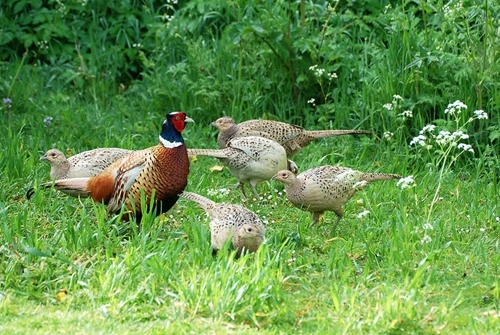
It was interesting to hear the question posed to BBC Radio 4’s ‘More or Less’ recently, a programme which aims to clarify numbers that are bandied around in the media to understand what is behind them. We welcome that this issue is being brought to a wider audience but are disappointed that the ensuing discussion appeared to represent only one side of an ongoing debate about pheasant releasing for shooting. The bottom line of the Radio 4 discussion focused on the biomass (combined weight) of pheasants in the countryside for shooting, and how large this is in comparison to other UK breeding birds. Rather than what we consider the more important question: what is the effect of this?
We can ask ourselves first: why is this comparison made? The answer is for context, so that the wider audience can begin to understand the size of the issue that is being brought to light. Context is all-important – the human brain is not good at visualising either very large or very tiny figures, so when it is reported that there are 47 million pheasants released, not many of us will really be able to grasp what that actually means. They’re just numbers. Very large numbers, which are fairly disconnected from reality for most people. Several hundred pheasants in woodland here, many thousand there, and tens of thousands in another place. Comparing with something else can help us understand the numbers in a relative way, if the comparison is a valid and helpful one. But is it?
Released gamebirds are close, but not the same, as wild breeding birds. Although free to roam, they tend to remain close to the area where they are released - because it is managed and maintained to provide for their needs and other wildlife tends to benefit from that management too. They are fed, protected and are only there for a few months, so in some ways are more like poultry than wild birds. Whilst there are similarities with farm livestock – they are cared for more than wild birds and often enter the food chain – they are not the same, so the comparison just as meaningless. To illustrate, there are about 22 million sheep in the UK and their biomass is more than that of pheasants – over six times more. These are interesting numbers, but none of these are a fair comparison that gives us any meaningful information.
So why biomass? The numbers are big, and pheasants are large birds, so calculating their total biomass and comparing it to breeding birds makes an impression. Based on figures from 1997, the biomass of breeding and released pheasants in autumn, just before the shooting season, was more than the biomass of all other native British breeding birds. The figure for the ‘other’ birds was calculated in spring, and that for pheasants was calculated in autumn, once they had been reared and released, having grown from chicks to young adults, so this also skews the comparison and makes it even less valid, but the point is made for a headline, rather than to be scientifically accurate. It is interesting that woodpigeons are also a large bird, they are more abundant than pheasants in spring and contribute a similar biomass. However, the impact of woodpigeons is overlooked. Furthermore, is it even meaningful or valuable to compare the biomass of different species? What does it really tell us? What is the question we actually need to answer?
Comparing the number and size is done to indicate that pheasants must be affecting the countryside into which they are released, perhaps to the detriment of other species. This more interesting question is very important, and one that the GWCT has spent many years researching. To understand the impact pheasant release can have, we need to look at it directly – not by looking at how many are there, or how big are they if you put them all together, but by studying the habitat they are released into, the management that is carried out, the impact on local species, and the effect of the pheasants themselves on the environment.
It is well beyond the scope of this article to summarise the findings of the GWCT lowland research team on this topic, along with many other scientific papers over many years – this has been ably done by University of Exeter and GWCT scientists recently in a comprehensive report for Natural England. We hope that a summary of this report will also be published shortly in the academic literature. But the overall findings are that negative impacts can be associated with the pheasants themselves, but that the management carried out to support the pheasants can have positive effects for local biodiversity including:
- Farms with shoots have between 10% and 65% more hedgerow per square kilometre. This shows that landscapes with game shoots had a greater abundance of hedgerows and hence wildlife corridors and connectivity.
- Woodland managed for shooting has wider rides cut into them, and these sunny areas have higher biodiversity, including more songbirds and butterflies.
- Supplementary feeders that provided food for pheasants are visited by many other bird species.
- Game crops and more hedgerows can provide food and shelter throughout the winter.
Best practice guidelines are in place to guide shoot managers as to how to minimise the potential negative impacts of pheasant releasing on the immediate environment they are released into, whilst retaining the positive wider effects for the countryside. There is still more to understand – the complex relationship between gamebird releasing and local predator populations is a good example, and GWCT scientists have also been studying this in recent years, with papers coming out recently and more to follow.
We recognise the challenge in representing all this in the space of a few minutes of radio, but with the ear of the nation we feel that the BBC’s flagship numbers programme could have represented the situation in a more balanced way.